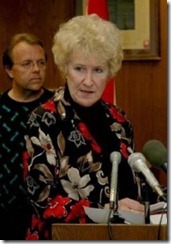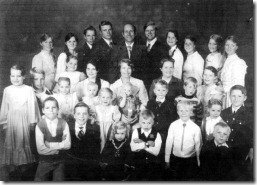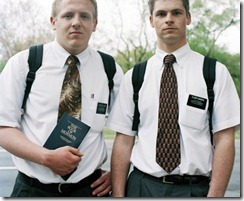 On this date in 1862, President Abraham Lincoln issued the preliminary Emancipation Proclamation, declaring all slaves in rebel states should be free as of January 1, 1863.
On this date in 1862, President Abraham Lincoln issued the preliminary Emancipation Proclamation, declaring all slaves in rebel states should be free as of January 1, 1863.
September 22, 2011
September 20, 2011
People with diabetes are at increased risk of having a heart attack or stroke at an early age, and diabetes appears to dramatically increase a person's risk of developing Alzheimer's disease or other types of dementia later in life, according to a new study conducted in Japan and led by Yutaka Kiyohara, M.D., an environmental medicine researcher at Kyushu University, in Fukuoka. The study included more than 1,000 men and women over age 60. At the beginning, tests showed that 15% of the participants had full-fledged diabetes, while 23% had prediabetes, also known as impaired glucose tolerance.  The participants were all dementia-free when the tests were done, but over the next 15 years 23% received a diagnosis of dementia. Slightly less than half of those cases were deemed to be Alzheimer's disease, with the remainder roughly split between vascular dementia and dementia due to other causes. The diagnoses were confirmed with brain scans of living patients and brain autopsies in deceased patients. Both diabetes and prediabetes were associated with an increased risk of dementia diagnosis, although the association was weaker for prediabetes. And the link persisted even after the researchers took into account several factors associated with both diabetes and dementia risk, such as age, sex, blood pressure, and body mass index. The researchers found that people with diabetes were twice as likely as the other study participants to develop Alzheimer's disease within 15 years. They were also 1.75 times more likely to develop dementia of any kind.
The participants were all dementia-free when the tests were done, but over the next 15 years 23% received a diagnosis of dementia. Slightly less than half of those cases were deemed to be Alzheimer's disease, with the remainder roughly split between vascular dementia and dementia due to other causes. The diagnoses were confirmed with brain scans of living patients and brain autopsies in deceased patients. Both diabetes and prediabetes were associated with an increased risk of dementia diagnosis, although the association was weaker for prediabetes. And the link persisted even after the researchers took into account several factors associated with both diabetes and dementia risk, such as age, sex, blood pressure, and body mass index. The researchers found that people with diabetes were twice as likely as the other study participants to develop Alzheimer's disease within 15 years. They were also 1.75 times more likely to develop dementia of any kind. 
September 13, 2011
From the Salt Lake Tribune:
Ever since the LDS Church declared its support for the Utah Compact, advocating compassion in the illegal immigration debate, and support of Utah’s guest-worker law, tea-party Mormons have seemed to waver between following their church leaders or Glenn Beck. Delegates at Republican conventions, while debating whether to ask for the Legislature’s repeal of the guest-worker bill, argued among themselves about the church’s role in the issue, whether it had a right to express an opinion, and what its statements really meant. Now we have the definitive answer from a former Arizona state senator who ran in the Republican primary for governor of that state last year and is a loudly proclaimed tea-party Mormon steeped in the belief she and all other good people are surrounded by government conspiracies.  Arizona State Sen. Karen Johnson says her beloved Mormon Church was brainwashed by evil liberals. And now, she surmises, Mormon leaders have something in common with the news media: They wallow in ignorance by opposing her righteousness. Yep, in the world of Johnson and the tradition of Mormon conservatives in her area of Mesa, Ariz., the LDS Church in Utah is now a liberal bastion. Johnson, who gave a speech in the Arizona Senate in 2008 alleging the collapse of the Twin Towers on 9/11 was the result of government conspiracy, wrote a lengthy piece on her blog last week that claims the Utah Compact was a carefully crafted conspiracy that sucked Mormon leaders in by using LDS code words. Johnson, who was named worst legislator of the year by the Arizona Republic in 2002, charged in her editorial that nobody would claim authorship of the Utah Compact which, among other things, advocates keeping families together when dealing with undocumented workers who Johnson and other tea partiers say should all be deported. She had harsh words for such liberal radicals as Salt Lake Chamber of Commerce President and former president of the Utah Senate Lane Beattie. Another liberal rascal revealed by her research is Paul Mero, of the Sutherland Institute (and you thought that was a conservative think tank). She unmasked the plot by pointing out that Chamber of Commerce executive Natalie Gochnour couldn’t say in a television interview who was the actual author of the compact. Johnson mocked Gochnour’s answer that up to 100 people had input into the final product. But Johnson found out that the real culprit was longtime political consultant Carter Livingston, a Democrat. Livingston was working with the Washington, D.C.-based National Immigration Forum and, in an interview uncovered by Johnson, said that in order to work with the conservative culture in Utah to arrive at a solution, he tried to find common ground, like keeping families together. And that’s what duped the church, says Johnson. The Arizona political culture from which Johnson comes is the same culture that created the political philosophy of Utah Eagle Forum president Gayle Ruzicka, who, while living in Arizona was part of the political machine that elected former Republican Gov. Evan Mecham, later disgraced by scandal. Ruzicka moved to Utah after that and has been molding Utah County in the image of Mesa ever since.
Arizona State Sen. Karen Johnson says her beloved Mormon Church was brainwashed by evil liberals. And now, she surmises, Mormon leaders have something in common with the news media: They wallow in ignorance by opposing her righteousness. Yep, in the world of Johnson and the tradition of Mormon conservatives in her area of Mesa, Ariz., the LDS Church in Utah is now a liberal bastion. Johnson, who gave a speech in the Arizona Senate in 2008 alleging the collapse of the Twin Towers on 9/11 was the result of government conspiracy, wrote a lengthy piece on her blog last week that claims the Utah Compact was a carefully crafted conspiracy that sucked Mormon leaders in by using LDS code words. Johnson, who was named worst legislator of the year by the Arizona Republic in 2002, charged in her editorial that nobody would claim authorship of the Utah Compact which, among other things, advocates keeping families together when dealing with undocumented workers who Johnson and other tea partiers say should all be deported. She had harsh words for such liberal radicals as Salt Lake Chamber of Commerce President and former president of the Utah Senate Lane Beattie. Another liberal rascal revealed by her research is Paul Mero, of the Sutherland Institute (and you thought that was a conservative think tank). She unmasked the plot by pointing out that Chamber of Commerce executive Natalie Gochnour couldn’t say in a television interview who was the actual author of the compact. Johnson mocked Gochnour’s answer that up to 100 people had input into the final product. But Johnson found out that the real culprit was longtime political consultant Carter Livingston, a Democrat. Livingston was working with the Washington, D.C.-based National Immigration Forum and, in an interview uncovered by Johnson, said that in order to work with the conservative culture in Utah to arrive at a solution, he tried to find common ground, like keeping families together. And that’s what duped the church, says Johnson. The Arizona political culture from which Johnson comes is the same culture that created the political philosophy of Utah Eagle Forum president Gayle Ruzicka, who, while living in Arizona was part of the political machine that elected former Republican Gov. Evan Mecham, later disgraced by scandal. Ruzicka moved to Utah after that and has been molding Utah County in the image of Mesa ever since.
September 12, 2011
This is what I wrote in my journal about yesterday:
Can’t really stand having the TV on now or reading the papers. Everything is about feeding our orgy of self pity on the 10th anniversary of 9/11 without any intelligent discussion of the causes or what has happened since. The way that event was politicized and used to undermine the democratic elements of our republic has tainted it for me.
This is what Paul Krugman wrote:
The fact is that the two years or so after 9/11 were a terrible time in America  – a time of political exploitation and intimidation, culminating in the deliberate misleading of the nation into the invasion of Iraq. It’s probably worth pointing out that I’m not saying anything now that I wasn’t saying in real time back then, when Bush had a sky-high approval rating and any criticism was denounced as treason. And there’s nothing I’ve done in my life of which I’m more proud. It was a time when tough talk was confused with real heroism, when people who made speeches, then feathered their own political or financial nests, were exalted along with – and sometimes above – those who put their lives on the line, both on the evil day and after. So it was a shameful episode in our nation’s history – and it’s one that I can’t help thinking about whenever we talk about 9/11 itself. Now, I should have said that the American people behaved remarkably well in the weeks and months after 9/11: There was very little panic, and much more tolerance than one might have feared. Muslims weren’t lynched, and neither were dissenters, and that was something of which we can all be proud. But the memory of how the atrocity was abused is and remains a painful one. And it’s a story that I, at least, can neither forget nor forgive.
– a time of political exploitation and intimidation, culminating in the deliberate misleading of the nation into the invasion of Iraq. It’s probably worth pointing out that I’m not saying anything now that I wasn’t saying in real time back then, when Bush had a sky-high approval rating and any criticism was denounced as treason. And there’s nothing I’ve done in my life of which I’m more proud. It was a time when tough talk was confused with real heroism, when people who made speeches, then feathered their own political or financial nests, were exalted along with – and sometimes above – those who put their lives on the line, both on the evil day and after. So it was a shameful episode in our nation’s history – and it’s one that I can’t help thinking about whenever we talk about 9/11 itself. Now, I should have said that the American people behaved remarkably well in the weeks and months after 9/11: There was very little panic, and much more tolerance than one might have feared. Muslims weren’t lynched, and neither were dissenters, and that was something of which we can all be proud. But the memory of how the atrocity was abused is and remains a painful one. And it’s a story that I, at least, can neither forget nor forgive.
September 6, 2011
How many species are there on this planet? In 1691, the scientist John Ray estimated that there were 20,000 species of insects. His numbers were significantly off — so far, at least a million insect species have been described. But he reached that estimate the way most scientists still do, by extrapolating from the number of already known species. Three centuries later, there is still no scientific consensus on the total number of species. The most rigorous attempt at a statistical analysis of the problem, a recent study led by scientists at Dalhousie University, concludes that there are about 8.7 million species on Earth. The team analyzed the numerical relationship between species, genus, family, and order in well-studied life-forms and used that pattern to estimate the number of species in categories of life that haven’t been well studied. 
September 2, 2011
There’s good news and bad news about Utah, which is kind of an improvement because usually there is only bad news. Keeping with tradition, the bad news first:
A 2007 survey by the Utah Commission on Criminal and Juvenile Justice put Utah’s reported rape rate at 63.7 per 100,000  females compared to the U.S. rate of 57.4 per 100,000 females. The survey also found that nearly one-third of Utah (still 60% Mormon) women surveyed had some type of sexual assault during their lifetimes. Surveys have shown that in many cases where family members are the perpetrators, other family members of the victim advise them not to tell authorities because they fear damage to the family image. That’s right, families are forever.
females compared to the U.S. rate of 57.4 per 100,000 females. The survey also found that nearly one-third of Utah (still 60% Mormon) women surveyed had some type of sexual assault during their lifetimes. Surveys have shown that in many cases where family members are the perpetrators, other family members of the victim advise them not to tell authorities because they fear damage to the family image. That’s right, families are forever.
Next, the good news:
One characteristic about Salt Lake City that you may not have guessed is that it has the third-highest rate of same-sex couples among America’s mid-size cities (those with populations between 100,000 and 250,000). It even ranks in the top 10 for same-sex couples of all cities, with such well-known liberal places as Berkeley, Calif.; Cambridge, Mass.; and Madison, Wis. Salt Lake City has 17.31 same-sex couples per 1,000 households, with 1,290 such couples overall.  That is more than double the national rate of 7.7. “It doesn’t surprise me,” Salt Lake City Mayor Ralph Becker said. “I have known as mayor, and as anyone here who pays attention also knows, that we have a relatively large and active LGBT [lesbian, gay, bisexual and transgender] community.” A series of state-by-state data releases from the 2010 census containing data on same-sex couples was recently completed, allowing national comparisons. The Williams Institute at the UCLA School of Law used it to rank states, counties, and cities. On the census form, a household head indicated that a second adult of the same sex is a spouse or an “unmarried partner.” The study uses census data on same-sex couple households to estimate the size of the LGBT population. That indicates about 8.5 percent of adults in Salt Lake City identify themselves as LGBT, compared with 3.8 percent of adults nationally.
That is more than double the national rate of 7.7. “It doesn’t surprise me,” Salt Lake City Mayor Ralph Becker said. “I have known as mayor, and as anyone here who pays attention also knows, that we have a relatively large and active LGBT [lesbian, gay, bisexual and transgender] community.” A series of state-by-state data releases from the 2010 census containing data on same-sex couples was recently completed, allowing national comparisons. The Williams Institute at the UCLA School of Law used it to rank states, counties, and cities. On the census form, a household head indicated that a second adult of the same sex is a spouse or an “unmarried partner.” The study uses census data on same-sex couple households to estimate the size of the LGBT population. That indicates about 8.5 percent of adults in Salt Lake City identify themselves as LGBT, compared with 3.8 percent of adults nationally.  Among large cities with populations of more than 250,000 people, San Francisco has the highest rate of same-sex couples at 33.41 per 1,000 residents, followed by Seattle at 25.54 and Oakland, Calif., at 24.61. The proportion of households with same-sex couples in Salt Lake City is similar to that of Denver, Boston, and even Manhattan, which has 19.32 per 1,000 households. Cities like Salt Lake City, Denver, Atlanta, and Minneapolis have a “regional draw” for LGBT people who are looking to live in a more accepting city without leaving their home state or region. In the past, it was more common to move to San Francisco or New York, but now it’s easier to find a welcoming climate closer to home. Jakob Crawford, a 21-year-old gay man who lives in Salt Lake City, agrees. “Gay people in Utah come to Salt Lake City because it’s almost like an island of liberal progressives in a sea of conservative Mormon culture,” he says.
Among large cities with populations of more than 250,000 people, San Francisco has the highest rate of same-sex couples at 33.41 per 1,000 residents, followed by Seattle at 25.54 and Oakland, Calif., at 24.61. The proportion of households with same-sex couples in Salt Lake City is similar to that of Denver, Boston, and even Manhattan, which has 19.32 per 1,000 households. Cities like Salt Lake City, Denver, Atlanta, and Minneapolis have a “regional draw” for LGBT people who are looking to live in a more accepting city without leaving their home state or region. In the past, it was more common to move to San Francisco or New York, but now it’s easier to find a welcoming climate closer to home. Jakob Crawford, a 21-year-old gay man who lives in Salt Lake City, agrees. “Gay people in Utah come to Salt Lake City because it’s almost like an island of liberal progressives in a sea of conservative Mormon culture,” he says.

